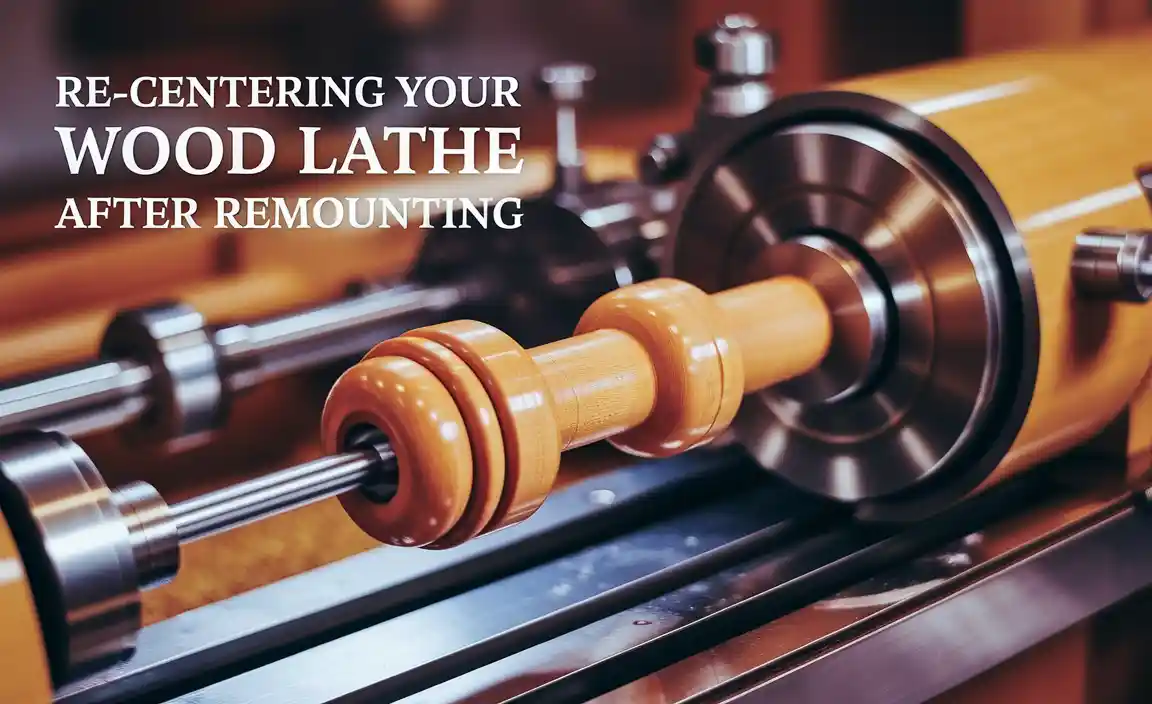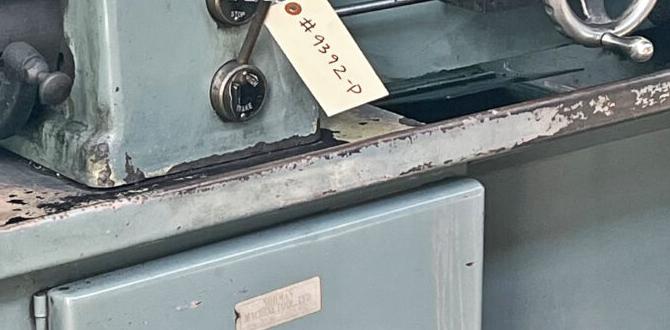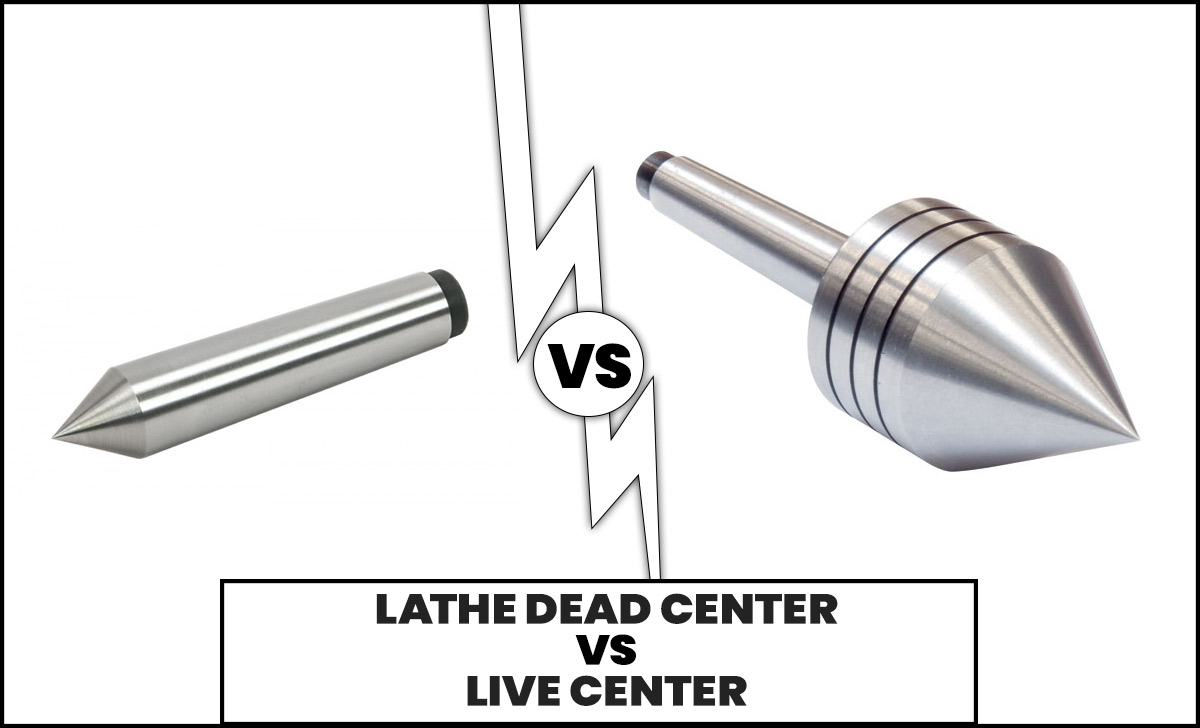When working on a lathe, you may have heard of two important terms: live center and dead center. But what do they really mean, and how do they help you? Imagine you are trying to spin a piece of wood. You want it to turn smoothly, right? The choice between live center and dead center can make a big difference in how well your project turns out.
Did you know that a live center spins with the workpiece? It offers less friction and helps you create smoother cuts. On the other hand, a dead center stays still and can be simpler to use for some projects. So, which one is better for you? It depends on what you’re making!
In this article, we will explore live center vs dead center in lathe work. Get ready to find out which option suits your needs best, and why understanding both is crucial for your success!
Live Center Vs Dead Center In Lathe: Key Differences Explained

Live Center vs Dead Center in Lathe
Choosing between a live center and a dead center can change how you work on a lathe. A live center spins with the workpiece, reducing friction. This means smoother cuts and less heat. On the other hand, a dead center stays still, creating more resistance but offering strong support for heavy workpieces. Imagine trying to draw with a pencil that won’t budge; it would be tough! Understanding these differences helps you work smarter and achieve better finishes. Make the right choice for your project!What is a Lathe Center?
Definition and purpose of lathe centers. Types of lathe centers: live and dead.A lathe center is a tool that helps hold the material while it spins. This is important for shaping or cutting materials like wood and metal. There are two main types of lathe centers:
- Live Center: This type turns with the material. It reduces friction and allows smoother operation.
- Dead Center: This type does not turn. It holds the material steady but can cause more friction.
Choosing the right type is key for a successful project!
What are lathe centers used for?
Lathe centers are used for keeping materials stable during machining. They ensure precision when cutting or shaping items.
Understanding Live Centers
Description and working mechanism of live centers. Advantages of using live centers in machining.A live center is a tool used on a lathe. It spins with the workpiece, providing support while it turns. The live center has a bearing inside. This allows it to rotate smoothly. Its ability to turn with the piece enhances accuracy in machining.
Here are some advantages of live centers:
- Improved accuracy for better finishes.
- Less friction which leads to longer life.
- More speed, allowing for quicker production.
- Reduced wear on the workpiece and tools.
Live centers help make work easier and faster. Using them can lead to high-quality results!
What are the main benefits of live centers?
Live centers provide better accuracy, less friction, and more speed in machining. They are great for extending tool life while reducing wear.
Understanding Dead Centers
Description and working mechanism of dead centers. Advantages of using dead centers in machining.Dead centers are great buddies for lathes, helping to hold workpieces steady. They don’t spin, which means they stay put while the workpiece turns around them. This design helps to avoid wobbles and keeps things smooth. Who needs a spinning partner, anyway? One bonus of dead centers is that they are less expensive to maintain compared to live centers. Using dead centers can extend tool life and improve accuracy — who doesn’t want that? They might not move, but they still rock!
| Advantages of Dead Centers |
|---|
| Cost-effective maintenance |
| Enhanced tool life |
| Improved accuracy |
Key Differences Between Live and Dead Centers
Comparison of functionality and application. Impact on precision and quality of finished workpiece.Live centers and dead centers play important roles in lathes. Here are some key differences:
- Functionality: Live centers have rotating points. This helps reduce friction. Dead centers stay still and can create more heat.
- Application: Live centers are great for long workpieces. They keep everything smooth. Dead centers work well for shorter pieces.
- Precision: Live centers offer better precision. They enhance the quality of the finished workpiece.
In summary, choosing between live and dead centers impacts your results. For a smooth finish, live centers are a better choice.
What are live and dead centers used for?
Live centers are used for rotating workpieces, improving precision. Dead centers hold workpieces in place but can cause more friction.
Applications of Live Centers in Lathe Operations
Industries and scenarios where live centers are preferred. Common projects and materials suitable for live centers.Live centers are widely used in various industries, making them a popular choice for many projects. They shine in busy shops, especially those working with wood, metal, and plastics. Imagine a car part spinning round and round! Live centers help keep it steady while allowing it to spin, just like a DJ at a party. They’re great for long pieces, like rods or tubes, where smooth rotation is key. Check out this table below for some common applications:
| Industry | Material | Common Projects |
|---|---|---|
| Automotive | Metal | Axles, shafts |
| Woodworking | Wood | Furniture legs |
| Manufacturing | Plastic | Pipes, fittings |
With their ability to spin smoothly, live centers help make projects easier and faster. So, next time you see a lathe in action, remember the magical live center working hard behind the scenes!
Applications of Dead Centers in Lathe Operations
Industries and scenarios where dead centers are used. Common projects and materials suitable for dead centers.In many industries, dead centers are the unsung heroes of lathe operations. They’re perfect for holding jobs that need precision, like shaft making or drilling holes. Typical materials include metals like steel and aluminum, as well as wood for crafting. Dead centers shine in places like machine shops, where folks want accuracy without the fancy tricks. Imagine your favorite pencil, carefully sharpened—just like that, a dead center keeps everything in line!
| Industry | Common Projects | Materials Used |
|---|---|---|
| Manufacturing | Shaft production | Steel |
| Construction | Wooden furniture | Wood |
| Aerospace | Precision components | Aluminum |
Factors to Consider When Choosing a Center
Material compatibility and desired precision. Cost and ease of use considerations.Choosing the right center for your lathe can be a tricky task. First, think about material compatibility. Some centers work better with certain materials. If you’re turning wood, you might not need the same precision as when working with metal. Next, consider desired precision. Do you want super exact cuts or is “close enough” fine? Then, there’s cost. Sometimes, a high price tag doesn’t mean top quality. And lastly, ease of use matters too! Don’t choose something that needs a manual thicker than a dictionary!
| Factor | Live Center | Dead Center |
|---|---|---|
| Material Compatibility | Great for softer materials | Best with harder materials |
| Desired Precision | High precision possible | Moderate precision |
| Cost | Usually more expensive | More budget-friendly |
| Ease of Use | Very user-friendly | Somewhat tricky |
Best Practices for Using Live and Dead Centers
Maintenance tips for prolonging the life of centers. Setup and alignment guidelines for precision work.Keeping your live and dead centers in top shape is like giving your tools a spa day. Regular cleaning is key! Wipe them down often to remove dust and grime. Good alignment is crucial for accurate work. Before starting, check that everything lines up just right. It’s like making sure your shoes are tied before you run! If they’re not aligned, you risk uneven cuts, and nobody likes a wobbly piece.
| Best Practices | Description |
|---|---|
| Regular Cleaning | Wipe centers to avoid dirt buildup. |
| Proper Alignment | Ensure everything is straight for precision. |
| Lubrication | Use oil sparingly to keep parts moving smoothly. |
Remember, a little maintenance goes a long way. You’ll have your centers spinning like a top and your workpieces looking sharp—just like a freshly sharpened pencil! So treat them well, and they’ll treat you well too!
Common Misconceptions About Live and Dead Centers
Myths surrounding the functionality of both types. Clarification of actual capabilities and limitations.Many people believe live centers are only for speed, while dead centers are only for support. However, that’s not the whole story. Each center has its strengths and weaknesses. For example, live centers provide less friction, allowing for smooth rotation. On the other hand, dead centers can handle higher loads but don’t move. Understanding these facts clears up common myths. Here are some key points:
- Live centers allow rotation.
- Dead centers can bear heavy loads.
- Both have important uses in lathes.
What is the main use of live and dead centers?
Live centers help in rotating the workpiece. They make turning easier. Dead centers hold the workpiece still but are great for certain jobs. Each plays a different role in the lathe process.
Conclusion
In summary, live centers allow faster work and reduce friction, while dead centers are simpler and cheaper. If you’re starting with a lathe, choose live centers for better results. Understanding these differences helps you pick the right tool for your project. Keep experimenting and learning, and check out more resources for tips on using a lathe effectively!FAQs
What Are The Primary Differences Between A Live Center And A Dead Center In Lathe Operations?A live center spins with the workpiece. It helps the lathe cut better and faster. A dead center doesn’t spin; it just holds the piece in place. This makes the live center more useful for heavy work. You can think of a live center as a helper that moves!
In What Scenarios Would You Choose To Use A Live Center Over A Dead Center, And Why?You would choose a live center when you need to turn something really fast. A live center has a moving part that spins with the piece you’re working on. This helps keep everything cool and makes it easier to work. We use a dead center when the piece doesn’t need to spin fast, like for heavy jobs. Live centers are great for quick work!
How Do The Rotational Capabilities Of Live Centers Impact The Precision And Efficiency Of Machining Processes?Live centers can spin while holding a piece of metal. This helps keep the metal steady as it gets shaped. When the center spins, it makes cuts more accurate and smooth. This means we can finish our work quicker and better. So, using live centers helps us make things that fit just right!
What Are The Maintenance Requirements For Live Centers Compared To Dead Centers In A Lathe?Live centers need more care than dead centers. You must keep the bearing inside the live center clean and oiled. This helps it spin smoothly. Dead centers are simpler; they don’t have moving parts, so you just need to check them for wear and keep them clean. Overall, live centers require regular maintenance, while dead centers are low maintenance.
Can You Explain The Types Of Workpieces Or Materials That Are Best Suited For Each Type Of Center In A Lathe?In a lathe, we use different centers for different jobs. A live center spins with the workpiece. It is great for softer materials like wood or plastic. A dead center doesn’t move and is better for hard metals. Choose the center based on what you are working with!







